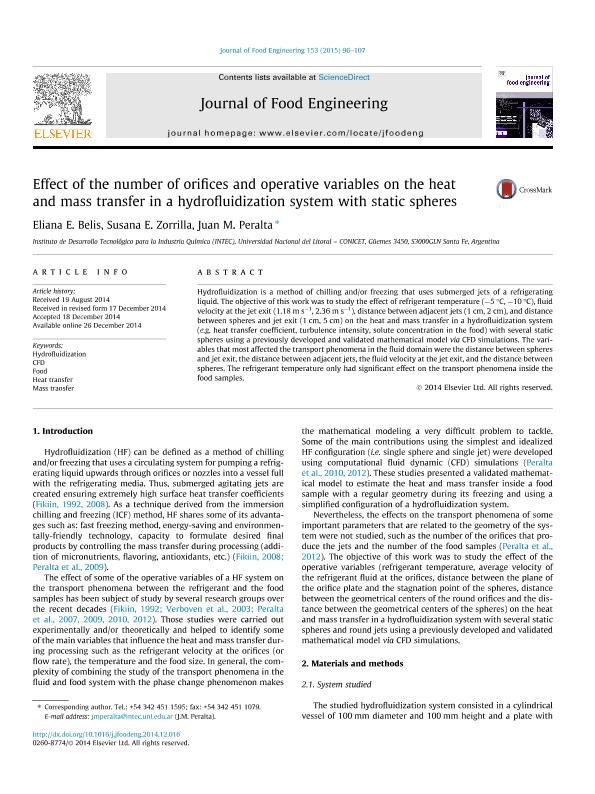Artículo
Effect of the number of orifices and operative variables on the heat and mass transfer in a hydrofluidization system with static spheres
Fecha de publicación:
01/2015
Editorial:
Elsevier
Revista:
Journal of Food Engineering
ISSN:
0260-8774
Idioma:
Inglés
Tipo de recurso:
Artículo publicado
Clasificación temática:
Resumen
Hydrofluidization is a method of chilling and/or freezing that uses submerged jets of a refrigerating liquid. The objective of this work was to study the effect of refrigerant temperature (-5°C, -10°C), fluid velocity at the jet exit (1.18 m/s, 2.36 m/s), distance between adjacent jets (1 cm, 2 cm), and distance between spheres and jet exit (1 cm, 5 cm) on the heat and mass transfer in a hydrofluidization system (e.g. heat transfer coefficient, turbulence intensity, solute concentration in the food) with several static spheres using a previously developed and validated mathematical model via CFD simulations. The variables that most affected the transport phenomena in the fluid domain were the distance between spheres and jet exit, the distance between adjacent jets, the fluid velocity at the jet exit, and the distance between spheres. The refrigerant temperature only had significant effect on the transport phenomena inside the food samples.
Palabras clave:
Hydrofluidization
,
Cfd
,
Food
,
Heat Transfer
,
Mass Transfer
Archivos asociados
Licencia
Identificadores
Colecciones
Articulos(INTEC)
Articulos de INST.DE DES.TECNOL.PARA LA IND.QUIMICA (I)
Articulos de INST.DE DES.TECNOL.PARA LA IND.QUIMICA (I)
Citación
Belis, Eliana; Zorrilla, Susana; Peralta, Juan Manuel; Effect of the number of orifices and operative variables on the heat and mass transfer in a hydrofluidization system with static spheres; Elsevier; Journal of Food Engineering; 153; 1-2015; 96-107
Compartir
Altmétricas




